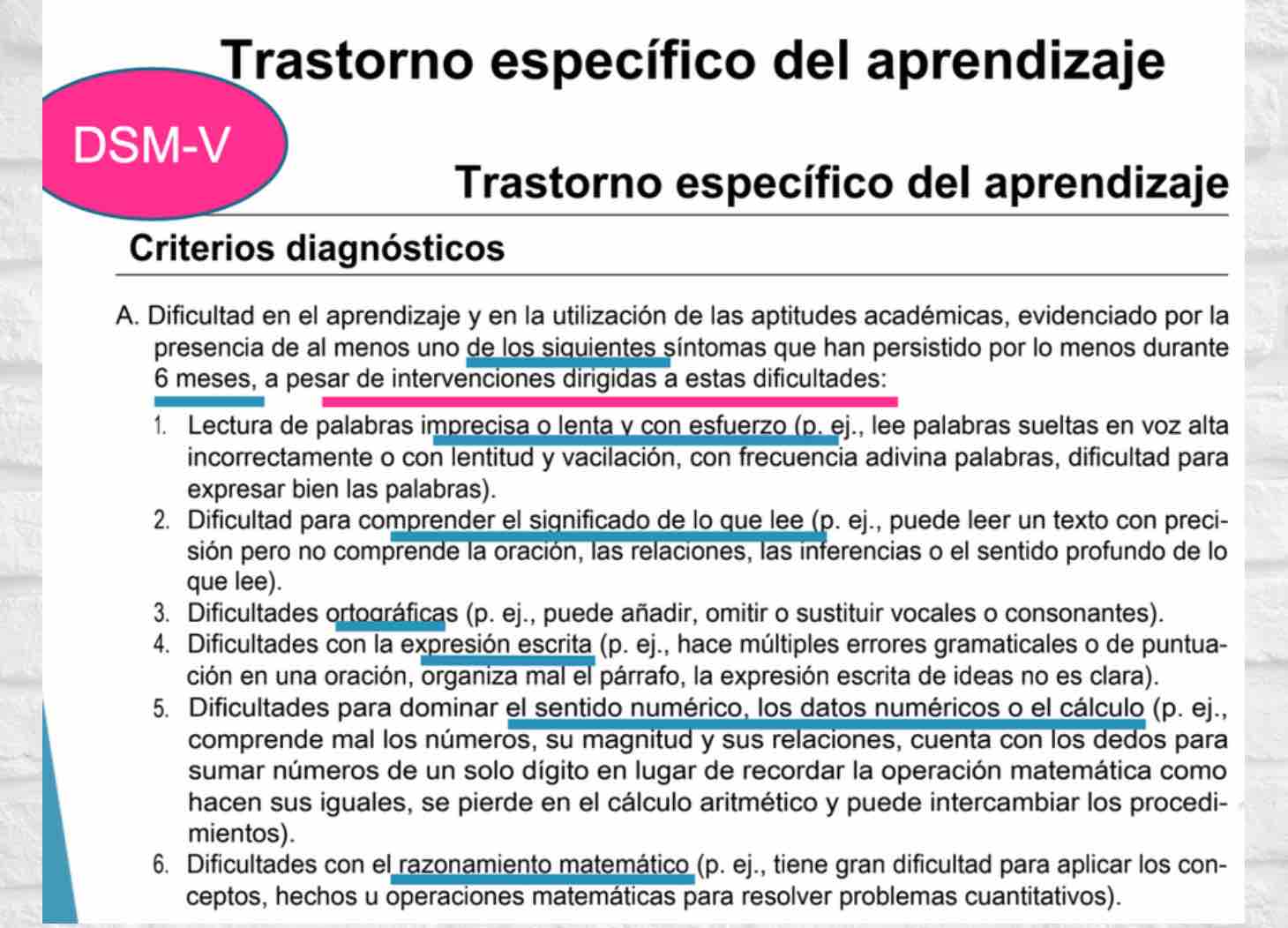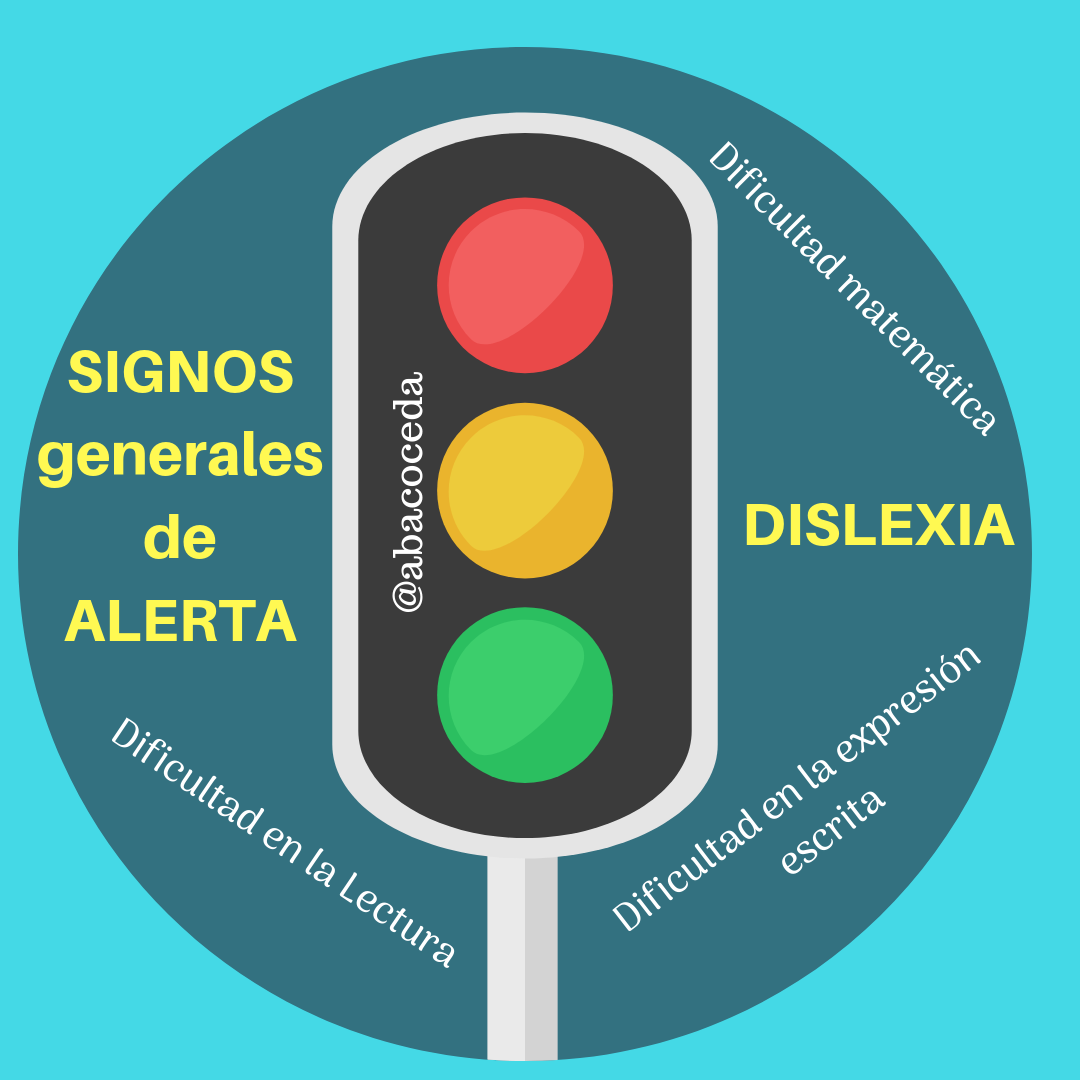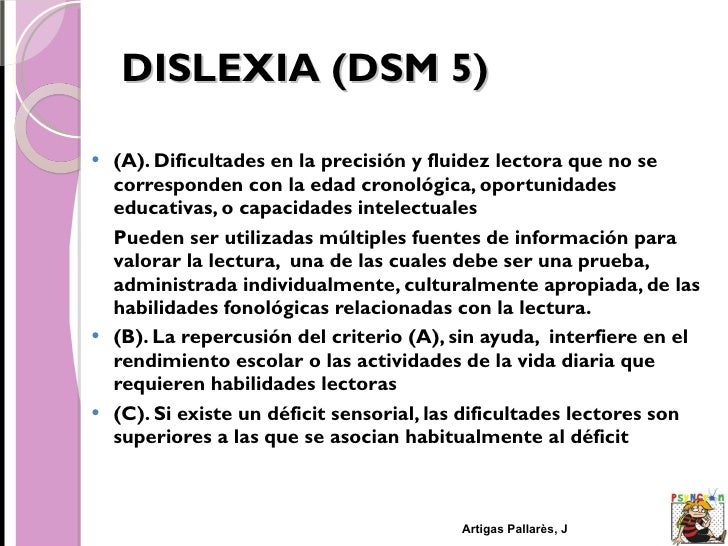De dislexia al trastorno específico de aprendizaje. Diagnóstico e intervención desde DSM V YouTube

¿Que son las DEA? Dificultades Específicas de Aprendizaje DT Málaga
Abstract. Up to 17% of German school children suffer from reading and writing disabilities. Unlike developmental dyslexia, only few studies have addressed dysgraphia. Presenting a comprehensive overview of the current state of the art in developmental dyslexia and dysgraphia, this paper aims to determine how far existing knowledge about the.

DSM v e Dislexia Dislexia Dificuldade de Aprendizagem
Specific learning disorders (often referred to as a learning disorder or learning disability, see note on terminology) are neurodevelopmental disorders that are typically diagnosed in early school-aged children, although may not be recognized until adulthood. They are characterized by a persistent impairment in at least one of three major areas.

Other specified dissociative disorder Wikipedia
This will improve understanding about risk and protective factors for the mental health of children with dyslexia. In terms of methodological factors, our review highlighted a need for more longitudinal work (especially over the transition to secondary school and beyond), which includes dyslexia-specific samples alongside typically developing.

Dislexia e DSM 5 onde está o maior erro do neuropsicólogo? YouTube
what is dyslexia? According to the Diagnostic Manual, the DSM-5, dyslexia is a subtype of a specific learning disorder: 1. Specific learning disorder with impairment in reading includes possible deficits in: Word reading accuracy Reading rate or fluency Reading comprehension DSM-5 diagnostic code 315.00. Note: Dyslexia is an alternative term used to refer to a pattern of […]

Os critérios de diagnóstico da Dislexia são um conjunto de sintomas na leitura, escrita e nas
DSM-5 Changes: What are the Implications? In May 2013, the 5th edition of the Diagnostic and Statistical Manual of Mental Disorders (DSM-V) was released. Since 1952, the DSM has provided standard criteria for the diagnosis and identification of myriad disabilities, including dyslexia. The DSM-V codes are designed to match those of the World.

LA DISLEXIA SIGNOS DE LA DISLEXIA EN DIFERENTES EDADES
What are the diagnostic criteria for specific learning disorder according to the DSM-5? This pdf document provides an excerpt from the official manual of the American Psychiatric Association, with examples and explanations of the key features and subtypes of this condition. Learn more about how to identify and support students with specific learning disorder in this informative resource.

Criterios Diagnósticos de la Dislexia (DSM5)
Learning Disabilities / psychology. The publication of the DSM-5 means changes in the classification and recommendations for diagnosis of specific learning disabilities. Dyslexia and dyscalculia have been reintroduced into the DSM. Three specific learning disorders - impairment in reading, impairment in the written expression, and imp..

Criterios diagnósticos del DSMV para dislexia La Dislexia en adolescentes y adultos 18/10/21
This post comes courtesy of Steve P. Dykstra, Ph.D., Psychology. He is a founding member of the Wisconsin Reading Coalition and a member of the Wisconsin Read to Lead Task Force. I ran into this issue again and I wanted to share some facts with people regarding the use of the term "dyslexia" and the DSM-5.

DISLEXIA desde la mirada del DSMV
Learning disabilities (LDs) are diagnosed using both educational and medical perspectives (Cortiella and Horowitz, 2014). From an educational perspective, the most commonly used definition is found in the federal special education law, the Individuals with Disabilities Education Act (IDEA). The medical perspective on LDs is reflected in the Diagnostic and Statistical Manual for Mental.

Artigas 3
A reasonable set of criteria and thresholds (−1.5 SD below mean for reading score, -0.5 SD for achievement) yielded a prevalence of dyslexia in France of 6.6% according to DSM-5 and 3.5% according to ICD-11. Factors that had the greatest influence on prevalence estimates were the criteria relative to 1) IQ, and 2) impact on academic achievement.

Aprendizaje de los niños con dislexia Espacio Pedagógico
2 • DSM-5 and Diagnoses for Children. Social communication disorder (SCD) is characterized by a persistent difficulty with verbal and nonver-bal communication that cannot be explained by low cognitive ability.

DISLEXIA desde la mirada del DSMV
Dyslexia is a specific learning disorder that refers to difficulty with reading. Individuals with dyslexia have difficulty connecting letters they see on a page with the sounds they make. As a result, reading becomes a slow, effortful and not a fluent process for them. Problems in reading begin even before learning to read.

CÓMO IDENTIFICAR UN NIÑO/A CON DISLEXIA CEI València
Developmental dyslexia is the commonest "specific learning disorder" (DSM-5) or "developmental learning disorder with impairment in reading" (ICD-11). This impairment in reading acquisition is related to a defect in the installation of cognitive precursors necessary to master the grapheme-phoneme co.

Características del niño con Dislexia Infografías
Specific Learning Disorder APA is a national medical specialty society whose more than 37,000 physician members specialize in the diagnosis, treat-ment, prevention and research of mental illnesses, including substance use disorders.

De dislexia al trastorno específico de aprendizaje. Diagnóstico e intervención desde DSM V YouTube
4 Criteria for diagnosing dyslexia, dyscalculia and other learning disorders. 1. Criteria A (Key Characteristics) Difficulty in mastering reading, writing, arithmetic skills, number sense, number facts or calculation and mathematical reasoning in school age years. The difficulty persisted for atleast 6 months and is failed to improve despite.

Dislexia Dysgraphia, Cbt, Dsm V, Class Management, Learning Disabilities, Nurse Life, Kids
In May 2012, we brought to your attention that the American Psychological Association was revising the Fourth Edition of the Diagnostic and Statistical Manual of Mental Disorders, which included greatly changing the section on specific learning disabilities.